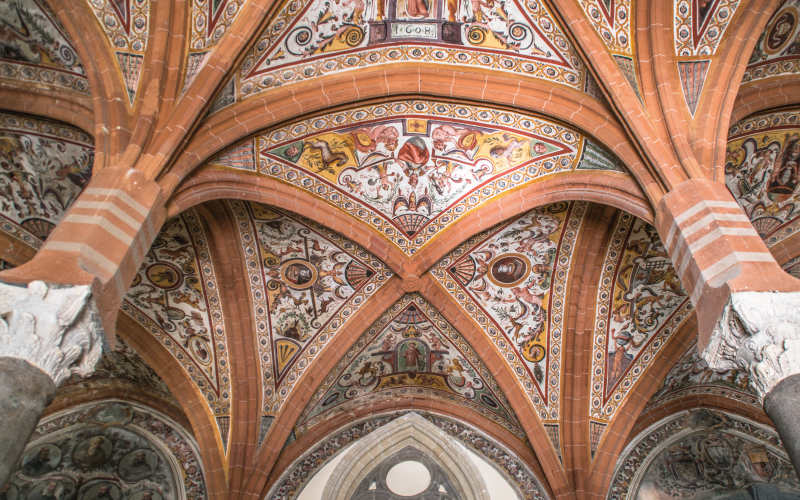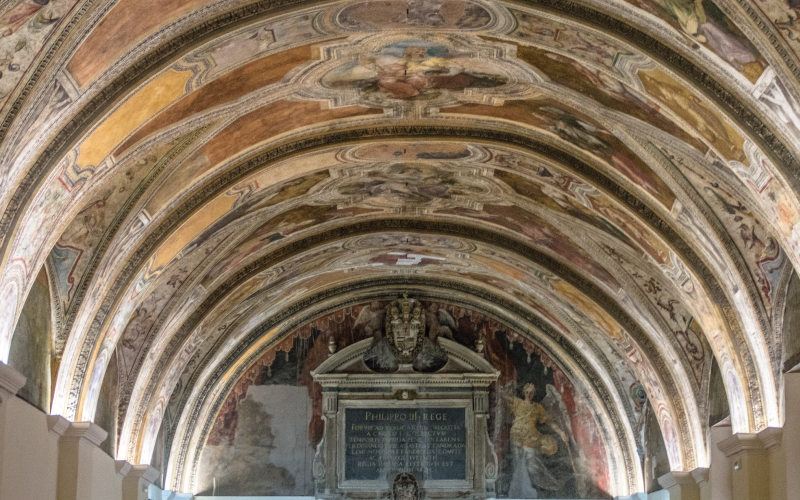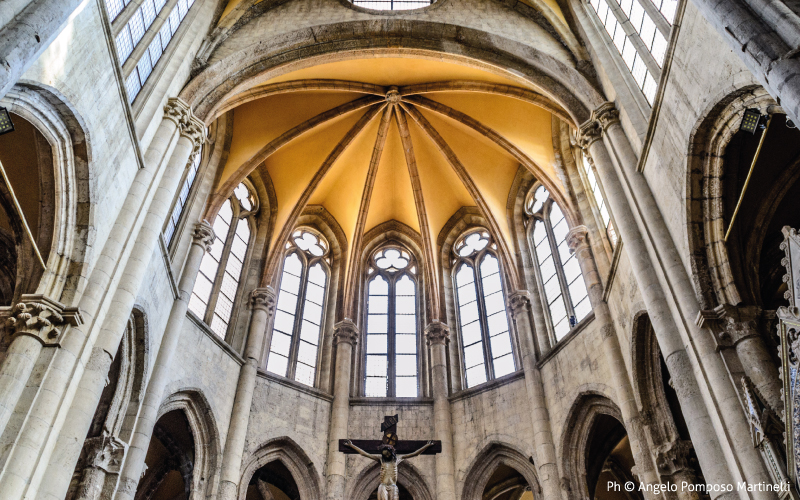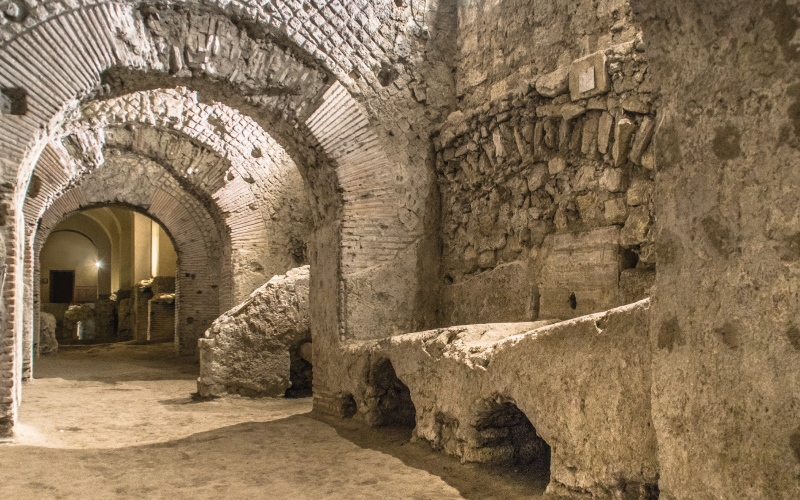HISTORY
A journey back in time
San Lorenzo Maggiore Complex
The history of Neapolis
The ancient Neapolis, founded in 470 B.C by Greek colonizers who had previously settled in Cumae, corresponds to that part of the historical centre of the city currently bordered to the north by Via Foria, to the west by Via Costantinopoli and Via San Sebastiano, to the east by Via Carbonara and to the south by Corso Umberto. Within this ancient city, marked by the regular intersection of a network of cardi and decumans, the monumental complex of San Lorenzo Maggiore is located in a special position, where once the agorà (the vital space of the Greek city ,which has later become the Roman Forum) was located.
The square outside the church (Piazza San Gaetano) is now bisected by the decuman of Via dei Tribunali. On the northern side of the square, where the Church of San Paolo Maggiore stands, there was the Dioscuri temple and, at its back, a bit further to the north, the great open-air theatre and the odeon (indoor theatre). The southern side, which partly corresponds to the archeological area of San Lorenzo, represents the com-mercial area of the city. Here once stood a two-story considerable building called the macellum (market): its upper floor coincided with the present elevation of Via dei Tribunali. The building, developed on a rectangular plan, was mostly paved with mosaics and had shops all around, which in turn were sided by a portico. Its perimeter enclosed the area currently occupied by the church of San Lorenzo, together with the 18th-century Cloister of the adjoining Franciscan monastery and its Chapter hall.
In the macellum inner courtyard there was a round temple, the tholos, whose base, along with its three steps once lined with marble slabs, can be partly seen now in the Cloister. Remnants of the mosaic floor date the original construction of the macellum between the 1st and the 2nd century B.C. The upper floor also consisted of shops and other constructions, used for different purposes.
Excavations have allowed to identify the superimposed layers upon which the entire contemporary area developed, thus enabling visitors to see how the various settlements have followed one another during the time, from the Greek to the Roman and from the Mediaeval to the Modern age.
LA CITTADINANZA ROMANA
Durante la I guerra sociale Neapolis decide di non schierarsi con le città italiche ribellatesi a Roma per ottenere la cittadinanza. Come ricompensa viene trasformata nel 90 a.C. da città alleata a municipium, ma tale nuova condizione si rivelerà un limite alla sua tradizionale autonomia, dovendo essa partecipare da questo momento in modo più diretto alle vicende di Roma. Schieratasi poi con Mario durante la guerra civile – 82 a.C. -, Neapolis, per la vittoria di Silla, è privata della flotta e del possesso di Pitecusa (Ischia), cosa che determina un notevole decadimento delle sue attività economiche.
LA COLONIA
In un periodo compreso tra l’età degli Antonini e quella dei Severi – II-III secolo d.C. – si colloca l’inizio di una nuova fase istituzionale della città, che viene trasformata da municipium in Colonia Aurelia Augusta Antoniniana Felix Neapolis. L’attenzione degli imperatori è rivolta all’organizzazione del territorio circostante piuttosto che alla città stessa. Neapolis, tuttavia, è ormai considerata solo un centro minore della Campania Felix, a differenza di Capua, che non avendo mai perduto un ruolo preminente diventa, in età costantiniana, capoluogo della provincia campana. La città vede la nascita di una forte comunità cristiana, che utilizza come rifugio le estese gallerie scavate nella collina di Capodimonte, le cosiddette catacombe.
LA CRISI DELL’IMPERO
Il IV e il V secolo d.C. coincidono con l’ulteriore declino della città. Poiché è forte la minaccia di scorrerie gotiche, l’imperatore Valentiniano III decide di migliorarne le difese. Pertanto la vecchia cinta muraria greca, che fino ad allora non aveva mai subìto modifiche sostanziali, viene consolidata ed ampliata a sud, così da inglobare il suburbio, che si trovava esposto al pericolo. L’ultimo atto della storia della Napoli greco-romana coincide con lo stesso che sancisce la fine dell’Impero Romano d’Occidente: Romolo Augustolo, ultimo imperatore, spodestato nel 476 da Odoacre, re degli Eruli, è tradotto in Neapolis e relegato nell’isola di Megaride dove, circa undici secoli prima, la storia della città aveva avuto inizio.
BUY TICKET

Luogo della Cultura - MiBACT
9,00 € – Full tickets
7,00 € – Artecard, Teachers, University students, Over65
6,00 € – Under 18 (Free Under 6)
4,00 € – School groups
Guide option

Menagement
scavisanlorenzo@libero.it
Schools/Groups Reservations
visite.sanlorenzo@libero.it
For events
eventisanlorenzo@libero.it
Address
Piazza S.Gaetano, 316 – NAPOLI
Phone
+39 081 2110860
Guided Tours Every Day
Italiano – English
10:30 13:00
12:00 16:00
13:30
15:00
16:30
17:30
Guide online






